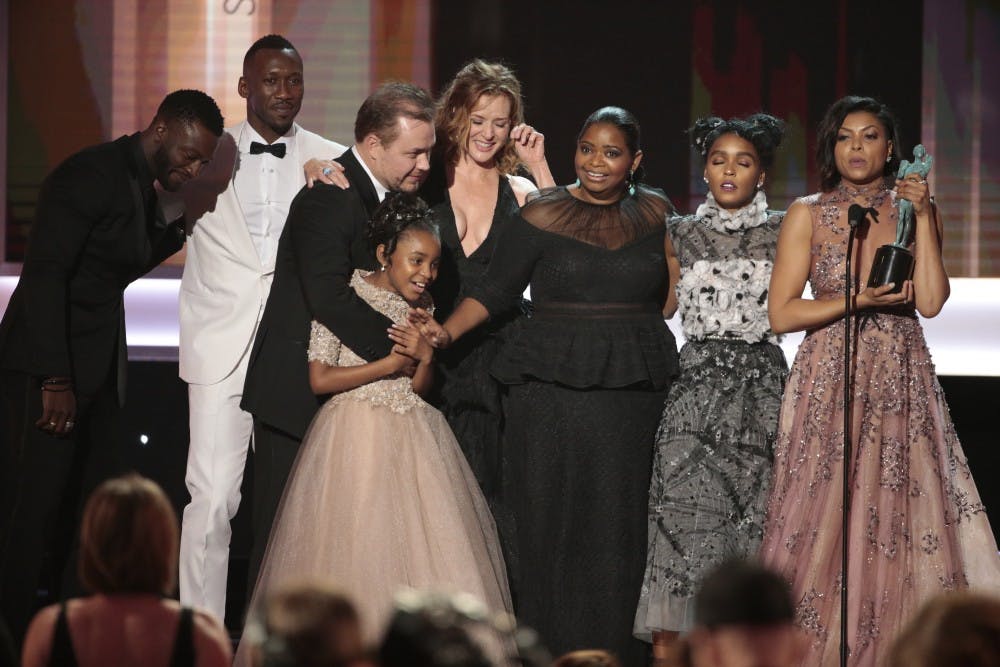Black women launched a man into space, and we’re only now hearing about it. Why did it take so long for the stories of Katherine G. Johnson, Dorothy Vaughan and Mary Jackson to reach the big screen?
Because ASU has such a diverse student population, this racial disparity in media representation is especially vital.
For too long, brilliant men and women have been shoved behind the scenes in the grand motion picture of American history. "Hidden Figures" sheds light on a story whose heroes have long been disregarded. Erasure has permeated our history, and stories like this need to be brought to the forefront of modern movie theaters.
The titular "Hidden Figures" of this film are Katherine Johnson (Taraji P. Henson), Dorothy Vaughan (Octavia Spencer) and Mary Jackson (Janelle Monáe), three African-American women who worked at NASA during the 1960s.
Their brilliant minds launched astronaut John Glenn into orbit, turning the tide of the Space Race.
This movie is groundbreaking in that it’s unlike any other film out right now: Not only are the main characters all African-American women, they are three-dimensional heroines who challenge the norms often perpetuated by Hollywood roles. They are also all highly intelligent mathematicians, a profession not often linked to women.
Take note of Hollywood’s horrible track record when it comes to diversity. The very first African-American woman to win an Oscar was Hattie McDaniel. While she made history, many feel that she was given a one-dimensional role, in which she portrayed the Mami stereotype in "Gone with the Wind." This stereotype doesn't allow true character development and supports racist attitudes.
As Austin S. Harris wrote in a Huffington Post article, “no black woman has ever been nominated for playing someone with a college education ... black women have a long history of playing maids in movies.”
“Hidden Figures” breaks the long-standing trend of negative African-American portrayals in media. Back in 2011, Octavia Spencer won the Academy Award for Best Supporting Actress for her role as Minnie, a housemaid, in "The Help." In 2016, the Academy is nominating her for the same award for her portrayal as an intelligent, compassionate and trailblazing mathematician.
It is crucial that young children of color see themselves positively represented in the media, especially if these characters are defined by their positive attributes rather than the color of their skin.
Not only is “Hidden Figures” inspiring and unique for its racial diversity, but it is also inspiring for its portrayal of women overcoming gender-based discrimination.
Women in science, technology, engineering and math are far outnumbered by men. There are many reasons for this, such as gender bias, cultural attitudes about women in math and the resulting feeling of not belonging in these fields.
Mary Cook, the vice president of Tempe’s Association for Women in Mathematics, disliked math when she was younger and only realized her love for the subject when she took higher-level math courses at ASU. In her undergraduate program, male math majors outnumbered their females classmates.
“The culture is male-skewed, especially at ASU. In undergrad, it can be harder to make friends because they’re all guys, and I felt like an outsider,” Cook said.
Luckily, higher-level courses have a more equal percentage of male and female students. Back when she was first starting, though, the gender divide proved a difficult task.
“It’s just that, when a field is already dominated by one gender, it can feel like you don’t really belong there, and it can make you want to quit,” she said.
Now she’s on her way to a Ph.D, and enjoys the creative challenges of her major.
“There’s a puzzle aspect to math,” she said. “It’s more creative than people give it credit for.”
It is so refreshing, as a feminist, to leave the theaters free of guilt. I often feel regretful buying a ticket for a movie that supports racist and sexist messages. I left the theaters uplifted, enlightened and ready for a future, where hidden figures are recognized as everyday heroes.
Reach the reporter at sosulli2@asu.edu or follow @serenaeosully on Twitter.
Editor’s note: The opinions presented in this column are the author’s and do not imply any endorsement from The State Press or its editors.
Want to join the conversation? Send an email to opiniondesk.statepress@gmail.com. Keep letters under 300 words and be sure to include your university affiliation. Anonymity will not be granted.
Like The State Press on Facebook and follow @statepress on Twitter.




